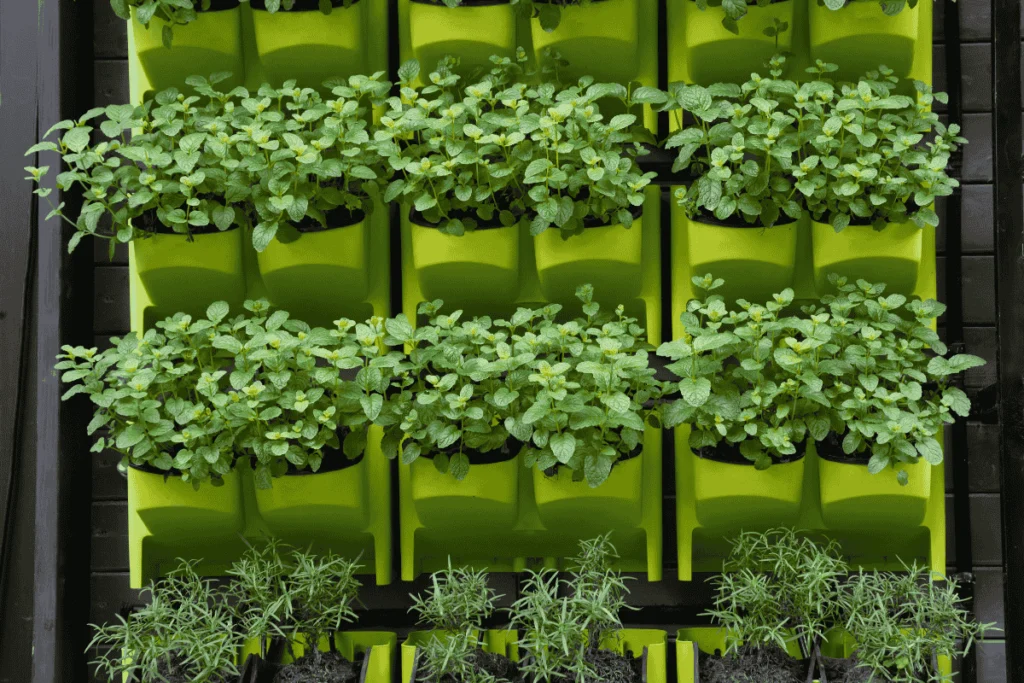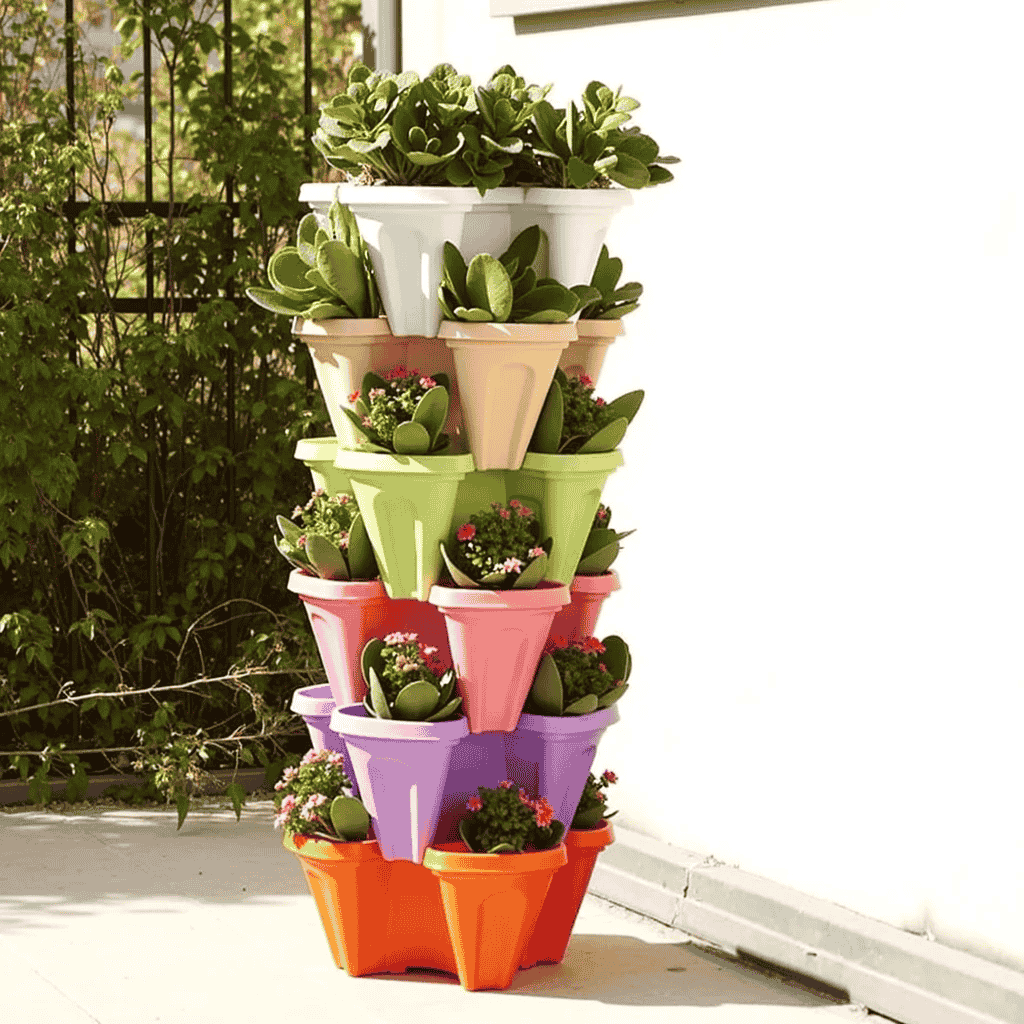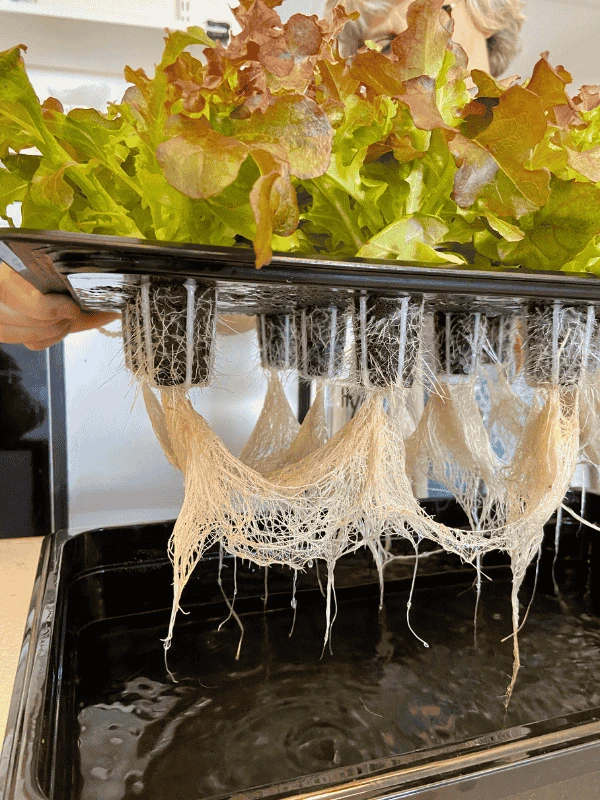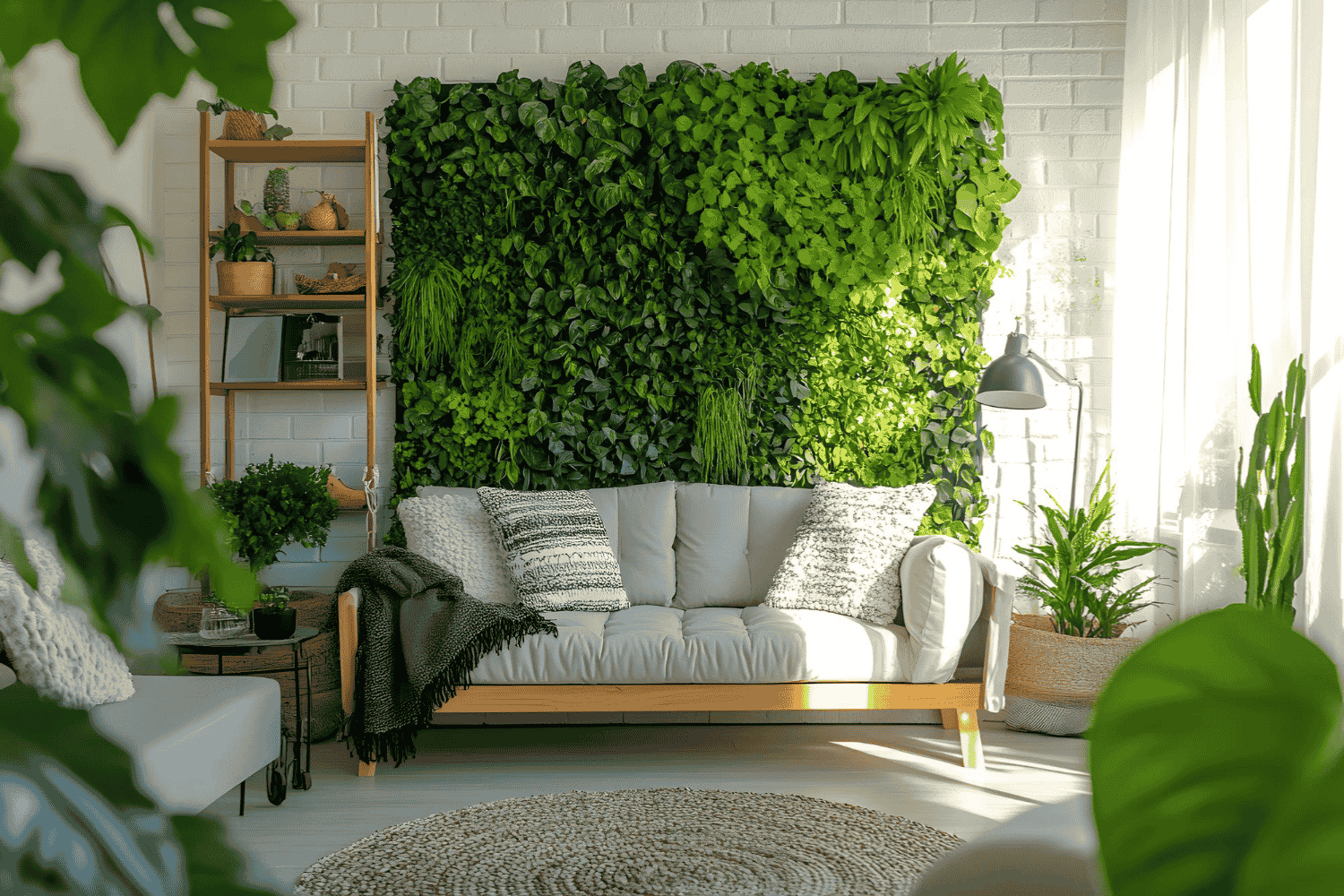🌻 Revolutionizing Urban Gardening with Modular Vertical Gardens 🌆🌱
🌿 Modular vertical gardens represent the next evolution 🚀 in home cultivation, offering a flexible 🧩, customizable 🛠️, and efficient ⚡ way to grow plants 🌱 in urban spaces 🏙️. These gardens consist of pre-designed, stackable, or interchangeable units 🪴 that can be tailored to suit any space 🏠 or purpose.
Whether you’re a beginner 🌱 or a seasoned gardener 🧑🌾, modular systems make it easier than ever to cultivate a thriving garden 🌸 at home 🏡.
🌿 What Are Modular Vertical Gardens? 🏗️
A modular vertical garden 🌱 is a gardening system composed of individual units 🪴 that can be easily assembled 🛠️, rearranged 🔄, or expanded ➕. These systems are perfect for:
🏢 Small spaces like apartments, balconies 🌇, and kitchens 🍳
🏬 Larger settings like offices 💻 and outdoor walls 🏠
🌟 Benefits of Modular Vertical Gardens 🌱✨
🔄 Flexibility and Customization 🧩
✅ Tailored Designs 🎨: Adapt the structure to fit your space 🏡, from compact wall panels 🧱 to freestanding towers 🏗️.
✅ Reconfigurable Layouts 🔄: Experiment with new designs 🖼️ or plant combinations 🌿🌸.
🛠️ Easy Installation 🧑🔧
✅ DIY-Friendly 🛠️: Most modular systems are easy to assemble, requiring minimal tools 🔧.
✅ Portable 🚚: Lightweight 🪶 and movable, ideal for renters 🏢 or seasonal adjustments 🍂☀️.
🏢 Space Efficiency 📏
✅ Vertical Growth 🌱: Maximize wall space 🧱 or narrow areas 🌇.
✅ Compact Systems 🪴: Perfect for dense planting 🌿 in small spaces.
🌍 Sustainability ♻️
✅ Recyclable Materials 🪵: Many systems use eco-friendly materials 🌱 like recycled plastic ♻️ or bamboo 🎍.
✅ Resource Efficiency 💦: Integrated irrigation systems 🚰 reduce water usage 💧, and compact designs minimize soil needs 🌿.
🌺 Enhanced Aesthetics 🎨
✅ Green Design 🌿: Adds natural beauty 🌷 and texture to your interiors 🏠 or exteriors 🏡.
✅ Multi-Purpose 🪟: Use as a decorative element 🖼️, room divider 🚪, or privacy screen 🛡️.
👉 For a detailed overview 📖 of modular vertical garden systems and their features, explore the comprehensive Modular Vertical Garden Guide 📝.
🥇 Popular Types of Modular Vertical Gardens 🌱🏗️
🧱 Stackable Planters 🪴
🌟 Features: Interlocking units 🧩 that can be stacked vertically 🆙 or horizontally ➡️.
🌱 Ideal For: Herbs 🌿, leafy greens 🥬, and compact flowering plants 🌸.

🧷 Wall-Mounted Panels 🏠🌿
🌟 Features: Modular panels 🪵 that attach directly to walls 🧱 with built-in pockets 🌱.
🌱 Ideal For: Indoor spaces like kitchens 🍳 and living rooms 🛋️.

🗼 Freestanding Towers 🏗️🌱

🌟 Features: Vertical towers 🗼 with rotating 🔄 or fixed modules.
🌱 Ideal For: High-yield gardening 🌿 on balconies 🏢 or patios 🌳.
💧 Hydroponic Systems 🚰🌿
🌟 Features: Soilless setups 🌱 with integrated water 💦 and nutrient delivery 🌿.
🌱 Ideal For: Advanced gardeners 🧑🌾 growing fruits 🍅, vegetables 🥕, and herbs 🌿.

🛠️ How to Set Up a Modular Vertical Garden 🌱🏗️
📝 Step 1: Assess Your Space 📏
🔎 Determine the location 📍 and size of your garden 🪴 based on available light ☀️, wall strength 🧱, and plant choices 🌿.
🧩 Step 2: Choose the Right System 🌱
✅ Select a modular garden 🏗️ that fits your needs, whether wall-mounted 🧷, stackable 🪴, or freestanding 🗼.
🛠️ Step 3: Assemble the Modules 🪵
🔧 Follow the manufacturer’s instructions 📄. Ensure stability 🏗️ and proper alignment 📏.
🌿 Step 4: Select Plants 🌺
✅ Pick plants that match the lighting 💡 and climate 🌤️ of your space. Combine different types 🌿🍅🌸 for variety.
💦 Step 5: Install Irrigation and Lighting 🌱
✅ Add drip irrigation 🚰 or grow lights 💡 to maintain plant health 🌱 indoors 🏠.
🌱 Step 6: Plant and Enjoy 🏡💚
✅ Fill modules with soil 🪨 or a growing medium 🌱, plant your greenery 🌿, and begin your gardening journey 🪴✨.
🌱 Best Plants for Modular Vertical Gardens 🌿🌺
🌿 Herbs: Basil 🌱, Mint 🌿, Thyme 🌱, Parsley 🌿
🥬 Leafy Greens: Lettuce 🥬, Spinach 🌱, Kale 🥗, Arugula 🌿
🍅 Vegetables: Cherry Tomatoes 🍅, Bell Peppers 🫑, Radishes 🥕
🌼 Flowers: Marigolds 🌼, Petunias 🌸, Nasturtiums 🌺
🌵 Succulents: Aloe Vera 🌵, Jade Plants 🌿, Echeveria 🌸
👉 Explore more vertical garden ideas 🌱 in our article: Create Your Own Self-Sustaining Vertical Garden 📝.
💡 Tips for Maintaining Modular Vertical Gardens 🪴🛡️
💧 Watering: Use an integrated irrigation system 🚰 or water manually with care 💦.
✂️ Pruning: Trim overgrown plants 🌿 to maintain airflow 💨 and light penetration ☀️.
🌱 Fertilization: Use organic fertilizers 🌿 every 3-4 weeks for nutrient replenishment.
🐜 Pest Control: Inspect plants regularly 🔍 and use natural remedies like neem oil 🧴.
🎨 Creative Ideas for Modular Vertical Gardens 🌿✨
🍃 Indoor Herb Wall: Mount a modular garden 🪴 in your kitchen 🍳 for fresh herbs 🌱.
🪟 Privacy Screen: Use a freestanding system 🗼 as a green divider 🚪 for balconies 🌇.
🌸 Living Art: Arrange colorful flowers 🌼🌺 in artistic patterns 🎨 for decorative displays.
🥗 Edible Garden: Grow a mix of vegetables 🥬 and fruits 🍓 for a sustainable food source 🌱.
🚀 The Future of Modular Vertical Gardens 🌍🌿
Modular vertical gardens 🌱 are paving the way for a greener 🌳, more sustainable future ♻️ in urban living 🏙️. With innovations like: 🔔 IoT Integration 📶 for plant monitoring 📊
💧 Automated watering systems 🚰 for effortless care 🌱
🪵 Improved eco-friendly materials ♻️ for durability 🌍
These gardens are becoming more accessible 🌿 and efficient 🏡.
❓ FAQ: Modular Vertical Gardens 📝🌱
1️⃣ What is a modular vertical garden? 🌿
✅ A modular vertical garden 🪴 consists of individual units 🧩 that can be assembled, reconfigured 🔄, and expanded ➕ to fit any space 🏢🏡.
2️⃣ Can I grow vegetables in a modular vertical garden? 🥗🌱
✅ Yes! 🥬 These systems are perfect for vegetables 🍅, leafy greens 🥗, and herbs 🌿. Ensure you match plants with the light ☀️ and climate 🌡️ conditions of your space.
3️⃣ Are modular vertical gardens difficult to install? 🛠️
✅ Not at all! 😎 Most are DIY-friendly 🧑🔧 with pre-installed irrigation options 💧 for quick setup 🪴.
4️⃣ What materials are used? 🪵♻️
✅ Many use recycled plastic ♻️, bamboo 🎍, or sustainable materials 🌍—durable and weather-resistant ☔.
5️⃣ Can I use one indoors? 🏠🌱
✅ Absolutely! 🪟 Wall-mounted panels 🪴 or freestanding towers 🗼 are ideal for kitchens 🍳, living rooms 🛋️, and offices 💻.
🌺 Conclusion: A Green Revolution in Your Home 🏡💚
Modular vertical gardens 🌿 combine practicality 🛠️, sustainability 🌍, and style 🎨—perfect for modern home cultivation 🏠.
Whether you want to enhance your space 🏢 with greenery 🌱 or grow your own food 🥗, these systems offer endless possibilities ✨.
🌱✨ Start your modular vertical garden today 📝 and experience the future of gardening 🌍💚!

